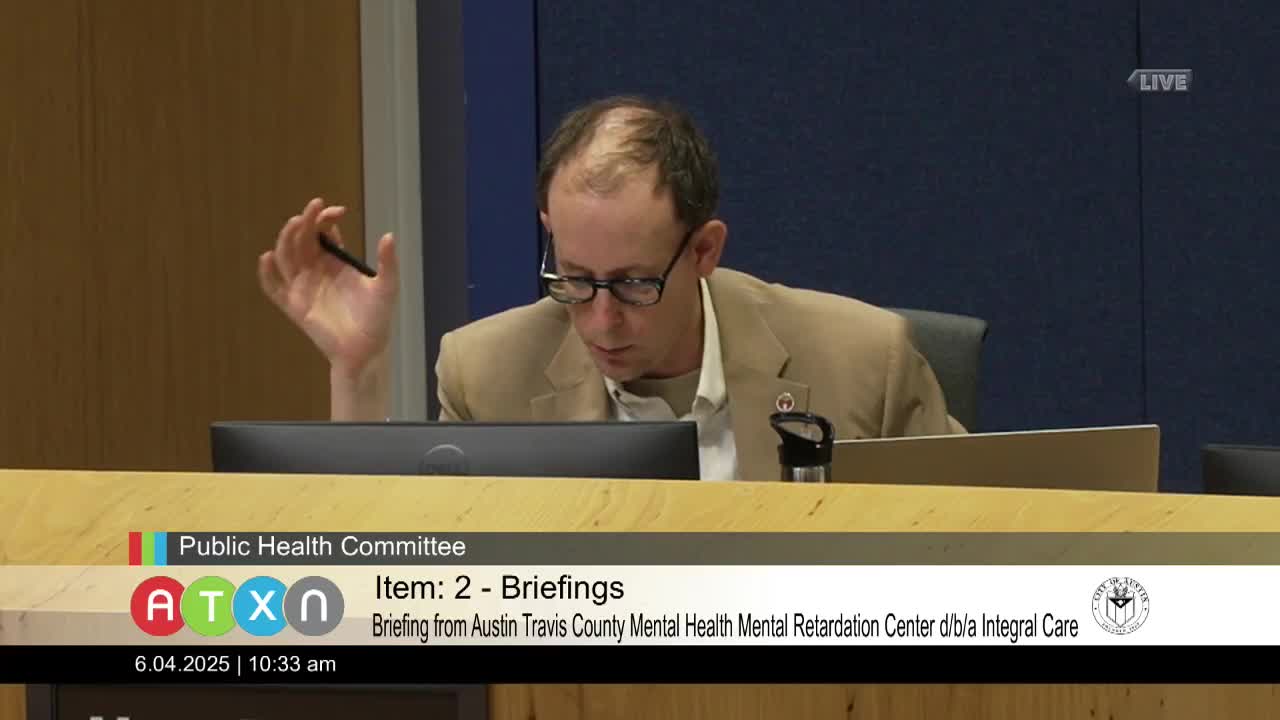City Council discusses funding gaps and 24/7 coverage for substance use programs
June 04, 2025 | Austin, Travis County, Texas
This article was created by AI summarizing key points discussed. AI makes mistakes, so for full details and context, please refer to the video of the full meeting. Please report any errors so we can fix them. Report an error »

The Austin Public Health Committee meeting on June 4, 2025, highlighted critical discussions surrounding the city's health services, particularly in the areas of staffing and substance use treatment. As the city prepares for upcoming budget considerations, officials emphasized the importance of accurately assessing program needs and potential funding gaps.
A key focus of the meeting was the staffing levels for the Mobile Crisis Outreach Team (MCOT), which aims to provide 24/7 coverage. While the team is not yet fully staffed, progress has been made in filling shifts, particularly during challenging overnight hours. The committee acknowledged the ongoing efforts to onboard and train new staff, which is essential for maintaining effective crisis response services.
Another significant topic was the demand for substance use treatment services in the community. Committee members discussed the need for a comprehensive gap analysis to better understand the extent of unmet needs. Currently, a county-led initiative is underway to evaluate the community's substance use treatment landscape. Despite the challenges posed by low reimbursement rates for these services, the city has made strides by expanding its narcotic treatment program, which now operates without a waitlist. This expansion includes an increase in funding for medication-assisted treatment programs, allowing for greater access to care for individuals in need.
The discussions underscored the committee's commitment to addressing public health challenges and ensuring that residents have access to essential services. As the city moves forward, the focus will remain on identifying funding opportunities and prioritizing programs that directly impact the community's health and well-being.
A key focus of the meeting was the staffing levels for the Mobile Crisis Outreach Team (MCOT), which aims to provide 24/7 coverage. While the team is not yet fully staffed, progress has been made in filling shifts, particularly during challenging overnight hours. The committee acknowledged the ongoing efforts to onboard and train new staff, which is essential for maintaining effective crisis response services.
Another significant topic was the demand for substance use treatment services in the community. Committee members discussed the need for a comprehensive gap analysis to better understand the extent of unmet needs. Currently, a county-led initiative is underway to evaluate the community's substance use treatment landscape. Despite the challenges posed by low reimbursement rates for these services, the city has made strides by expanding its narcotic treatment program, which now operates without a waitlist. This expansion includes an increase in funding for medication-assisted treatment programs, allowing for greater access to care for individuals in need.
The discussions underscored the committee's commitment to addressing public health challenges and ensuring that residents have access to essential services. As the city moves forward, the focus will remain on identifying funding opportunities and prioritizing programs that directly impact the community's health and well-being.
View full meeting
This article is based on a recent meeting—watch the full video and explore the complete transcript for deeper insights into the discussion.
View full meeting
